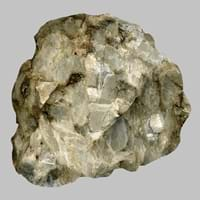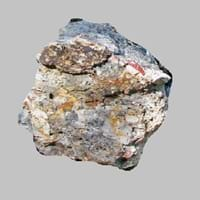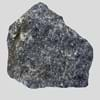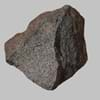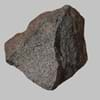Definition
Sovite is a coarse-grained variety of carbonatite which belongs to intrusive igneous rock
Novaculite is a dense, hard, fine-grained, siliceous metamorpic rock which is a type of chert that breaks with conchoidal fracture
Discoverer
Unknown
Unknown
Etymology
Not Available
From Latin word novacula, for razor stone
Class
Igneous Rocks
Sedimentary Rocks
Sub-Class
Durable Rock, Soft Rock
Durable Rock, Hard Rock
Group
Plutonic
Not Applicable
Other Categories
Coarse Grained Rock, Fine Grained Rock, Medium Grained Rock, Opaque Rock
Fine Grained Rock, Opaque Rock
Texture
Granular, Poikiloblastic
Banded, Glassy, Rough, Vitreous
Color
Black, Brown, Colourless, Green, Grey, Pink, White
Black, Brown, Green, Grey, Red, White
Durability
Durable
Durable
Scratch Resistant
Yes
Yes
Appearance
Dull, Banded and Foilated
Glassy or Pearly
Interior Uses
Decorative Aggregates, Homes
Countertops, Decorative Aggregates, Flooring, Interior Decoration
Exterior Uses
As Building Stone, Garden Decoration, Office Buildings
As Building Stone, Garden Decoration
Other Architectural Uses
Curbing
Curbing
Construction Industry
As a Flux in the Production of Steel and Pig Iron, As a Sintering Agent in Steel Industry to process Iron Ore, As Dimension Stone, Cement Manufacture, for Road Aggregate, Making natural cement, Manufacture of Magnesium and Dolomite Refractories, Unknown, Unknown
Arrowheads, Building houses or walls, Cement Manufacture, Construction Aggregate, Cutting Tool, for Road Aggregate, Knives, Landscaping, Making natural cement, Production of Glass and Ceramics, Rail Track Ballast, Roadstone, Spear Points, Used to sharpen metal tools and weapons
Medical Industry
Taken as a Supplement for Calcium or Magnesium
Not Yet Used
Antiquity Uses
Artifacts
Artifacts, Monuments
Commercial Uses
An Oil and Gas Reservoir, As a Feed Additive for Livestock, Creating Artwork, Gemstone, Metallurgical Flux, Production of Lime, Soil Conditioner, Source of Magnesia (MgO)
Cemetery Markers, Gemstone, In aquifers, In fire-starting tools, Jewelry, Manufacture of tools, Pebbles are used in ball mills to grind in ceramics industry, To determine the gold content of jewelry
Types
Not Available
Not Available
Features
Available in lots of colors, Generally rough to touch, Is one of the oldest rock
Clasts are smooth to touch, Easily splits into thin plates, Has High structural resistance against erosion and climate
Archaeological Significance
Monuments
Not Yet Used
Used
Famous Monuments
Not Applicable
Data Not Available
Sculpture
Not Yet Used
Not Yet Used
Famous Sculptures
Not Applicable
Not Applicable
Pictographs
Used
Not Used
Petroglyphs
Used
Not Used
Figurines
Not Yet Used
Not Yet Used
Formation
Sovites are formed due to low degrees of partial melting of rocks.
Novaculite forms when microcrystals of silicon dioxide grow within soft sediments that become limestone or chalk. The formation of Novaculite can be either of chemical or biological origin.
Mineral Content
Ancylite, Apatite, Barite, Fluorite, Magnetite, Natrolite, Sodalite
Quartz, Silicon
Compound Content
CaO, Carbon Dioxide, Sodium Oxide
Ca, Silicon Dioxide
Types of Metamorphism
Burial Metamorphism, Cataclastic Metamorphism, Contact Metamorphism, Hydrothermal Metamorphism, Impact Metamorphism, Regional Metamorphism
Not Applicable
Types of Weathering
Biological Weathering, Chemical Weathering, Mechanical Weathering
Not Applicable
Types of Erosion
Chemical Erosion, Coastal Erosion, Glacier Erosion, Sea Erosion, Water Erosion, Wind Erosion
Chemical Erosion, Coastal Erosion, Glacier Erosion
Grain Size
Medium to Fine Coarse Grained
Fine Grained
Fracture
Conchoidal
Conchoidal
Porosity
Less Porous
Less Porous
Luster
Subvitreous to Dull
Waxy and Dull
Compressive Strength
Not Available
Cleavage
Not Available
Non-Existent
Specific Gravity
2.86-2.87
2.5-2.7
Transparency
Opaque
Translucent to Opaque
Density
2.84-2.86 g/cm3
2.7 g/cm3
Specific Heat Capacity
Not Available
Resistance
Heat Resistant, Pressure Resistant
Heat Resistant, Impact Resistant, Pressure Resistant, Wear Resistant
Deposits in Eastern Continents
Asia
China, India, Kazakhstan, Mongolia, Russia, Uzbekistan
China, India, Iran, Japan, Oman, Russia, Saudi Arabia, Taiwan, Thailand, Vietnam
Africa
Namibia, Nigeria, South Africa
Kenya, Morocco, South Africa, Tanzania
Europe
Austria, Denmark, Germany, Great Britain, Netherlands, Norway, Poland, Sweden, Switzerland, United Kingdom
Austria, France, Greece, Italy, Malta, Poland, Portugal, Serbia, Spain, Sweden, United Kingdom
Others
Greenland
Greenland, Mid-Atlantic Ridge
Deposits in Western Continents
North America
Canada, USA
Canada, Mexico, USA
South America
Brazil
Bolivia, Brazil
Deposits in Oceania Continent
Australia
New South Wales, New Zealand
New South Wales, Queensland, South Australia, Western Australia
Sovite vs Novaculite Characteristics
Though some rocks look identical, they have certain characteristics which distinguish them from others. Characteristics of rocks include texture, appearance, color, fracture, streak, hardness etc. Sovite vs Novaculite characteristics assist us to distinguish and recognize rocks. Also you can check about Properties of Sovite and Properties of Novaculite. Learn more about Sovite vs Novaculite in the next section. The interior uses of Sovite include Decorative aggregates and Homes whereas the interior uses of Novaculite include Countertops, Decorative aggregates, Flooring and Interior decoration. Due to some exceptional properties of Sovite and Novaculite, they have various applications in construction industry. The uses of Sovite in construction industry include As a flux in the production of steel and pig iron, As a sintering agent in steel industry to process iron ore, As dimension stone, Cement manufacture, For road aggregate, Making natural cement, Manufacture of magnesium and dolomite refractories, Unknown, Unknown and that of Novaculite include Arrowheads, Building houses or walls, Cement manufacture, Construction aggregate, Cutting tool, For road aggregate, Knives, Landscaping, Making natural cement, Production of glass and ceramics, Rail track ballast, Roadstone, Spear points, Used to sharpen metal tools and weapons.
More about Sovite and Novaculite
Here you can know more about Sovite and Novaculite. The life cycle of a rock consists of formation of rock, composition of rock and transformation of rock. The composition of Sovite and Novaculite consists of mineral content and compound content. The mineral content of Sovite includes Ancylite, Apatite, Barite, Fluorite, Magnetite, Natrolite, Sodalite and mineral content of Novaculite includes Quartz, Silicon. You can also check out the list of all Igneous Rocks. When we have to compare Sovite vs Novaculite, the texture, color and appearance plays an important role in determining the type of rock. Sovite is available in black, brown, colourless, green, grey, pink, white colors whereas, Novaculite is available in black, brown, green, grey, red, white colors. Appearance of Sovite is Dull, Banded and Foilated and that of Novaculite is Glassy or Pearly. Properties of rock is another aspect for Sovite vs Novaculite. The hardness of Sovite is 3 and that of Novaculite is 7. The types of Sovite are Not Available whereas types of Novaculite are Not Available. Streak of rock is the color of powder produced when it is dragged across an unweathered surface. The streak of Sovite is white while that of Novaculite is colorless. The specific heat capacity of Sovite is Not Available and that of Novaculite is 0.74 kJ/Kg K. Depending on the properties like hardness, toughness, specific heat capacity, porosity etc., rocks are resistant to heat, wear, impact, etc.Sovite is heat resistant, pressure resistant whereas Novaculite is heat resistant, impact resistant, pressure resistant, wear resistant.
